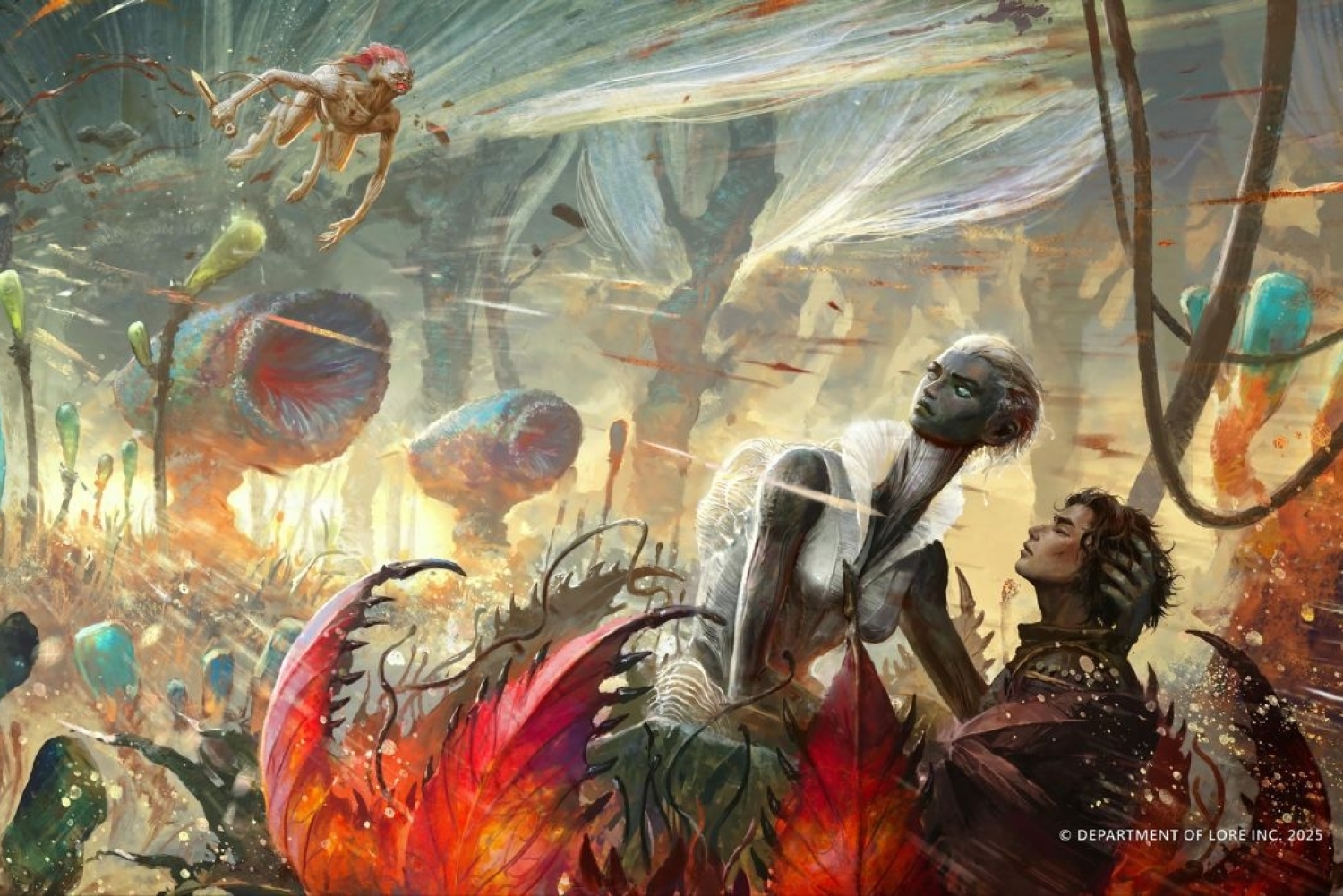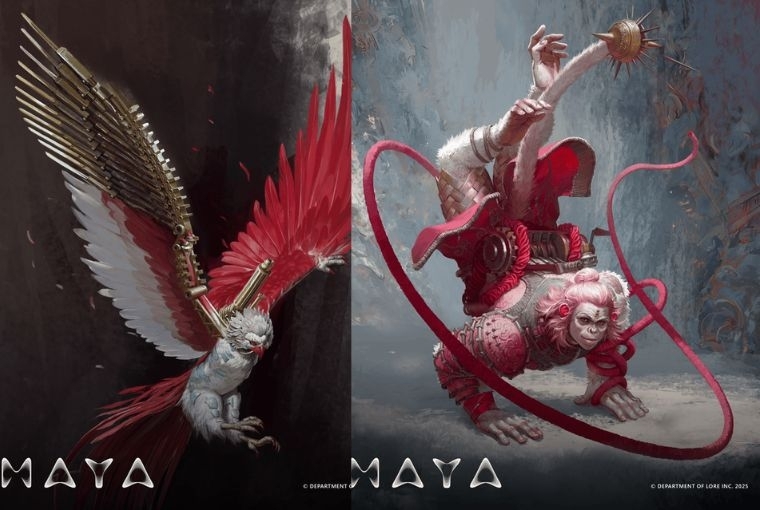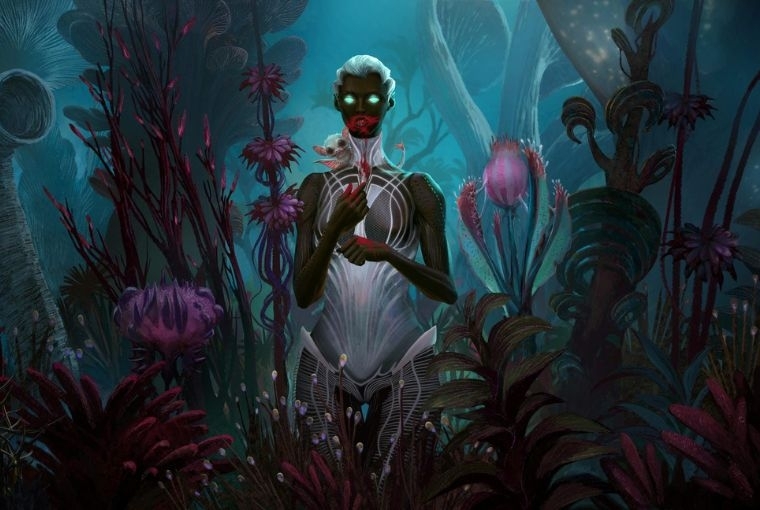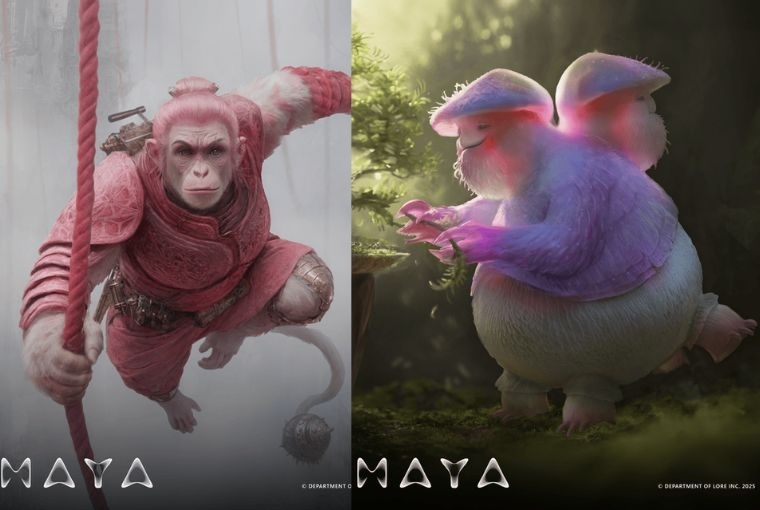

For Anand Gandhi and Zain Memon, the creators behind MAYA, entertainment has always been one of the most effective vehicles for transmitting new ideas and frameworks of thought. Through novels, films, games and immersive experiences, MAYA is revolution disguised as entertainment, inviting us to step inside these systems and come out with new ways of seeing. With their experience of building SHASN, the viral multi-player political strategy game, they’re ready to scale it all up with MAYA, by examining the invisible, technological power structures that govern our lives. Set in a planet called ‘Neh’, the protagonist Yachay, is invisible to the gods of data. We’re in conversation with Anand and Zain about building a world where mythology and technology come together in a universe that mirrors our own.
MAYA blends science fiction, fantasy, philosophy and so much more – where did the idea for this universe come from? Take us right back to the beginning.
MAYA didn't begin with a specific story or even genre or format in mind. It started with questions that kept us awake at night. We were living through an age where our attention was being harvested, our desires manufactured, and our futures predicted by algorithms we couldn't see or understand. The stories that we grew up with and usually fell back upon for help - from literature, cinema, mythology - felt insufficient to help us make sense of this new rapidly emerging reality.
We realized that the most urgent questions of our time weren't being addressed by contemporary narratives. How do you maintain agency when your thoughts are being shaped? What does freedom mean when surveillance is invisible? These questions demanded a new kind of story - one that could function as both mirror and map for a society in great technological upheaval.
We began drawing from the storytelling traditions that had always admired. Before long, the narrative of MAYA began taking shape, rooted in the trinity of ancient mythology, high-fantasy, and hard science-fiction.
Data, freedom and control seems to play an important role in this world and its functioning, could you tell us about the significance of that?
The Maya trees are a sentient network of trees on Neh that everyone connects to daily. The Maya trees induce vivid life-like dreams, in which people work, play, and live out impossible desires. This daily 'tethering' is a way of life. Unbeknownst to them, Maya remembers all their thoughts, their dreams, their fears. A handful of people use this data to divine the future itself.
In our own world, our data trails predict our behavior, influence our choices, and shape our realities - but we rarely see these mechanisms clearly at work. MAYA makes this explicit and omnipresent.
This raises significant questions about consent and agency. When everyone must tether to participate in society, is it really a choice? When your memories become raw materials for engineering the future, who owns your past? These are no longer speculative concerns - they're urgent questions about our current relationship with technology and power - and MAYA lays down an argument for how we may collectively answer them.

Where did the inspiration for Yachay arise from? What sort of character is he, and what does he represent?
Yachay is the only being on Neh who has never tethered to Maya - and not by choice. This makes him simultaneously the freest and most isolated character in our story.
Everyone around him shares memories, dreams, collective experiences through Maya. Yachay has none of this. He's completely outside the network that defines civilization on Neh. He doesn't even fully understand what he's missing until the story begins. Ironically, his longing for connection is precisely what makes him dangerous to the system that he is kept outside of - a central tension in his story.
Raised as an outsider on the fringes of society, Yachay’s education is unlike anyone else’s on Neh. He’s a voracious reader (which makes him a consumer of an archaic technology), an aspiring riddler, and a kind-hearted person who can’t help but do the right thing. He is inspired partly by the archetype of the reluctant hero, the chosen one - but much of his journey will investigate whether being chosen makes one worthy.
MAYA spans novels, films, games, and immersive experiences; what storytelling opportunities (& challenges) arise from this blending of form?
Each medium offers unique possibilities for exploring many themes in MAYA. Novels allow us to dive deeply into the interiorities of characters navigating this world. Games make players actively participate in the moral landscape of the universe, giving them the power to shape outcomes. Films allow for epic narratives at a visceral, awe-inspiring scale.
The challenge lies in maintaining narrative coherence while respecting what each medium does best. This appreciation has shaped everything that we have ever created - across films, television, games, non-fiction, and VR. We begin with the story that we tell, and allow it to take shape until it chooses the medium it is best suited to.

Why did you choose to situate this universe at the intersection of modern technology and South Asian mythology? What new meanings emerged when you combined these two?
South Asian philosophical traditions have always grappled with big questions about the nature of reality and consciousness. 'Maya' has been classically used to describe cosmic illusion, delusion, or simply - the indescribable. We have proposed an updated meaning of Maya through our story: complex, emergent systems that are greater than the sum of their parts.
This definition is also well suited to studying the nature of modern technology. We live inside complex and invisible systems. Algorithms, data, and predictive models govern how we think and act. The emergent complexity of the world around us lends itself to what older philosophers might have called ‘Maya’. Our attempt with this story is to build a narrative framework that empowers readers to break down these systems into their constituent parts, so that each piece of the problem can be studied and solved for. This meeting point of modern technology and science and South Asian mythology and philosophy has allowed us to build new bridges - between the West and the East, the known and the unknown, politics and poetry, logos and mythos.
What do you hope to contribute to the gaming landscape in India today? Is there a gap you are trying to fill?
India’s gaming landscape today is abysmal to the point of being non-existent. Gambling is not gaming. While there is a lot of technical talent in India, little creative talent and vision has revealed itself in the gaming space. We’re disheartened by the number of projects we see that are blatant copies and reskins of existing games. We urgently need to support game designers who are trying to build original games, and tell new stories. Each upcoming MAYA game is an attempt to bring new genres together, and enrich the larger landscape.

Could you tell us a little about how MAYA is revolution disguised as entertainment? What do you hope for readers and gamers to take away from it?
Entertainment has always been one of the most effective vehicles for transmitting new ideas and new frameworks of thought. In MAYA, the revolution in the method. Instead of lecturing people about surveillance capitalism or algorithmic manipulation, we let people enter and experience these systems from the inside. They learn to recognize the patterns that dictate their lives by living through them in a fictional context. By experiencing how attention economies function on Neh, audiences develop intuitive understanding of how they operate in our world. We hope that every reader takes away a cognitive toolkit - a new ability to spot when their attention is being harvested, when their choices are being narrowed, when their futures are being predicted and shaped by forces they can't see.
How has your experience of working on SHASN shaped this experience?
MAYA takes everything we learned from SHASN and scales it up dramatically. Where SHASN explored visible political power structures, MAYA examines the invisible technological ones that increasingly govern our lives.
SHASN was an immensely valuable training ground that taught us how to build systems and products that can scale aggressively. Through our SHASN journey, we learned how to move away from culture as a service to culture as a product. In the process, we learned the whole product supply chain from design to manufacturing to distribution. That expertise has helped us build everything MAYA.

L: Founders, Anand Gandhi and Zain Memon
What are you working on now – what is the future looking like?
Our first novel, MAYA: Book One, will be launching soon on Kickstarter. There are multiple other products across media formats in various stages of development. We have already completed three MAYA board games, written two graphic novels, written the first film screenplay, and begun work on the first digital game.
We’re also in the process of building what will be a larger creative sandbox for new creators to come into MAYA and create their own experiences. Our best case scenario is that in a few years, the best stories and experiences in the MAYA universe will be someone else’s.
Words Neeraja Srinivasan
Date 27-8-2025